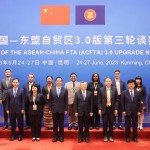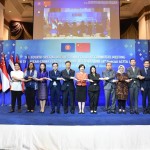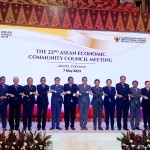Tổng số bài đăng 427.
Four of Southeast Asia’s six largest economies: Thailand, Singapore, the Philippines, and Indonesia posted slower GDP growth in the third quarter of 2025 compared to the same period last year, reflecting pressure on exports, manufacturing, and domestic consumption. Meanwhile, Malaysia and Vietnam continued to stand out as bright spots in the region.
Thailand struggles amid manufacturing and export slowdown
According to the National Economic and Social Development Council (NESDC), Thailand’s GDP grew only 1.2% year-on-year in Q3 2025, significantly lower than the 2.8% expansion seen in Q2 - the slowest pace since Q3 2021.
On a seasonally adjusted basis, the Thai economy even contracted by 0.6% quarter-on-quarter, marking the first quarterly decline in nearly three years.
The downturn was driven by a contraction in manufacturing, particularly in automobiles, machinery, and rubber products. The manufacturing sector shrank by 1.6%, ending a streak of six consecutive quarters of growth.
Exports of goods and services also lost momentum, rising only 6.9% in Q3 compared with 11.2% in Q2. NESDC attributed part of the slowdown to newly imposed U.S. tariffs, which weakened demand for Thai computer products and other manufactured goods, alongside a slowdown in tourism.
“Manufacturing declined due to weaker exports, largely affected by U.S. tariff measures,” NESDC Secretary-General Onfa Vejjajiva said.
In response to worsening conditions, NESDC revised its full-year 2025 GDP growth forecast down to 2.0% (previously 1.8–2.3%) and warned that exports could fall by 0.3% in 2026 if protectionist measures persist.
Despite challenges, the agency noted that domestic spending especially private consumption will remain the main buffer against a technical recession. It urged the government to speed up budget disbursement, diversify export markets, and support agriculture to revive growth.
Singapore, the Philippines, and Indonesia See Slower Momentum
In Singapore, manufacturing output in Q3 2025 was flat compared to the previous quarter, in contrast with the 5% expansion recorded in Q2. As a result, the country’s preliminary GDP growth eased to around 2.9% year-on-year - substantially weaker than in the prior quarter.
In Indonesia, the slowdown was primarily driven by household consumption - which accounts for about half of GDP - rising only 4.89%, its slowest pace in seven quarters. This dragged overall GDP growth down to 5.04% in Q3.
Similarly, in the Philippines, household spending grew just 4.1% in Q3, compared with 5.3% in Q2. Oxford Economics Chief Economist Sunny Liu noted: “Household consumption - the key growth engine accounting for around 70% of GDP - lost momentum despite inflation remaining low.”
Liu added that the Philippine economy was further affected by a series of typhoons between July and September, as well as weaker investor sentiment tied to corruption allegations surrounding a major flood-control project, which undermined public confidence.
Malaysia and Vietnam continue to outperform
Contrary to regional trends, Malaysia posted stronger GDP growth in Q3, expanding about 5.2% compared with 4.4% in Q2. The improvement was supported by a rebound in mining-related exports, although private consumption moderated slightly from 5.3% to 5.0%.
Bank Negara Malaysia Governor Abdul Rasheed Ghaffour emphasized that household spending is expected to “remain solid,” supported by rising employment and wages, alongside government cash assistance programs.
The brightest performer was Vietnam, whose economy accelerated to an estimated 8.2% growth in Q3 2025. The expansion was driven by robust manufacturing, construction, and services activity. Capital Economics emerging-markets economist Shivaan Tandon projected that Vietnam will maintain strong economic performance in the coming period despite global uncertainties, noting that the country’s export advantage to the U.S. remains intact as other regional peers face similar tariff measures.
Overall, Southeast Asia’s Q3 2025 economic landscape shows a sharply diverging picture: export- and manufacturing-dependent economies such as Thailand, Singapore, the Philippines, and Indonesia are confronting global trade headwinds and rising costs, while Malaysia and Vietnam continue to shine.
Given mounting challenges, struggling economies may need to strengthen domestic stimulus, diversify export markets, and accelerate public investment to sustain long-term growth momentum.
Source: Compiled by the Multilateral Trade Policy Department, Ministry of Industry and Trade












